 W
WAnatoly Alekseyevich Dorodnitsyn — 7 June 1994, Moscow) — Russian mathematician, physicist, leader of scientific research, and an outstanding University mentor. Professor (1949) and Full member of the Russian Academy of Sciences (1953), Department of physical and mathematical sciences, majoring in geophysics.
 W
WVladimir Pavlovich Barmin was a Soviet scientist, designer of the first soviet rocket launch complexes.
 W
WKarel Jan Bossart was an innovative rocket designer and creator of the Atlas ICBM. His achievements rank alongside those of Wernher von Braun and Sergei Korolev. But as most of his work was for the United States Air Force and was therefore classified, his achievements are not widely known.
 W
WMagnus "Mac" Freiherr von Braun was a German chemical engineer, Luftwaffe aviator, rocket scientist and business executive. In his 20s he worked as a rocket scientist at Peenemünde and the Mittelwerk.
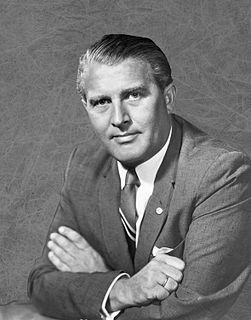 W
WWernher Magnus Maximilian Freiherr von Braun was a German-born American aerospace engineer and space architect. He was the leading figure in the development of rocket technology in Nazi Germany and a pioneer of rocket and space technology in the United States.
 W
WJames D. Burke is a lunar settlement and exploration expert. He is known for being the first program manager of the Ranger Program, and considered one of the pioneers of America's space program
 W
WVladimir Nikolayevich Chelomey or Chelomei was a Soviet mechanics scientist, aviation and missile engineer. He invented the first Soviet pulse jet engine and was responsible for the development of the world's first anti-ship cruise missiles and ICBM complexes like the UR-100, UR-200, UR-500 and UR-700.
 W
WBoris Yevseyevich Chertok was a Russian electrical engineer and the control systems designer in the Soviet Union's space program, and later found employment in the Russian Roscosmos in Russia.
 W
WSir Arthur Charles Clarke was an English science-fiction writer, science writer, futurist, inventor, undersea explorer, and television series host.
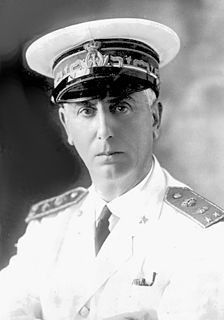 W
WGaetano Arturo Crocco was an Italian scientist and aeronautics pioneer, the founder of the Italian Rocket Society, and went on to become Italy's leading space scientist. He was born in Naples.
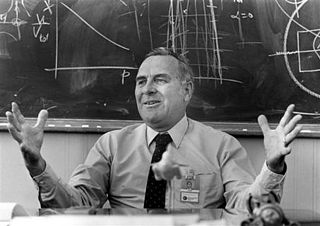 W
WWerner Karl Dahm was an early spaceflight scientist of the Peenemünde Future Projects Office who emigrated to the US under Operation Paperclip and was the Marshall Space Flight Center Chief Aerodynamicist.
 W
WKonrad Dannenberg was a German-American rocket pioneer and member of the German rocket team brought to the United States after World War II.
 W
WKurt Heinrich Debus was a German-born American rocket engineer, the first director of NASA's Launch Operations Center.
 W
WTimur Magomedovich Eneev was a Russian mathematician specializing in mechanics and control processes. A minor planet Eneev discovered in 1978 is named after him. He was the editor-in-chief of the journal Cosmic Research. He was a member of the Balkar ethnic group.
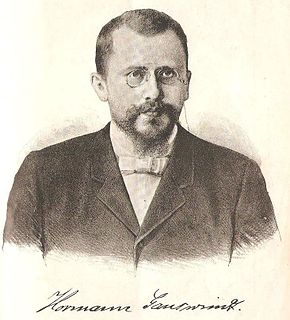 W
WHermann Ganswindt was a German inventor and spaceflight scientist, whose inventions are thought to have been ahead of his time.
 W
WValentin Petrovich Glushko, was a Soviet engineer and designer of rocket engines during the Soviet/American Space Race.
 W
WRobert Hutchings Goddard was an American engineer, professor, physicist, and inventor who is credited with creating and building the world's first liquid-fueled rocket. Goddard successfully launched his rocket on March 16, 1926, ushering in an era of space flight and innovation. He and his team launched 34 rockets between 1926 and 1941, achieving altitudes as high as 2.6 km (1.6 mi) and speeds as fast as 885 km/h (550 mph).
 W
WDieter Grau was an aerospace engineer and member of the "von Braun rocket group", at Peenemünde (1939–1945) working on the V-2 rockets in World War II. He was among the engineers who surrendered to the United States and traveled there, providing rocketry expertise via Operation Paperclip, which took them first to Fort Bliss, Texas. Grau was sent by the U.S. Army to White Sands in 1946 to work on the assemblage and testing of the V-2. His wife joined him there in 1947. While von Braun was on standby at Fort Bliss, Grau and other German aerospace engineers busily launched V-2s for U.S. scientists to analyze. A total of 67 V-2s were launched at White Sands.
 W
WWalter Haeussermann was a German-American aerospace engineer and member of the "von Braun rocket group", both at Peenemünde and later at Marshall Space Flight Center, where he was the director of the guidance and control laboratory. He was awarded the Department of the Army Decoration for Exceptional Civilian Service in 1959 for his contributions to the US rocket program.
 W
WOscar Carl Holderer was an engineer who worked for Nazi Germany during World War II before coming to the United States and working in the Apollo space program.
 W
WOleg Genrikhovich Ivanovsky was a Soviet engineer, and pioneer of spacecraft construction.
 W
WWalter Jacobi was a rocket scientist and member of the "von Braun rocket group", at Peenemünde (1939–1945) working on the V-2 rockets in World War II.
 W
WJohann Schmidlap of Schorndorf was a 16th-century Bavarian fireworks maker and rocket pioneer.
 W
WTheodore von Kármán was a Hungarian-American mathematician, aerospace engineer, and physicist who was active primarily in the fields of aeronautics and astronautics. He was responsible for many key advances in aerodynamics, notably on supersonic and hypersonic airflow characterization. He is regarded as the outstanding aerodynamic theoretician of the 20th century.
 W
WMstislav Vsevolodovich Keldysh was a Soviet scientist in the field of mathematics and mechanics, academician of the USSR Academy of Sciences (1946), President of the USSR Academy of Sciences (1961–1975), three times Hero of Socialist Labor, fellow of the Royal Society of Edinburgh (1968). He was one of the key figures behind Soviet space program. Among scientific circles of USSR Keldysh was known with epithet "the Chief Theoretician" in analogy with epithet "the Chief Designer" used for Sergey Korolyov.
 W
WNikolai Ivanovich Kibalchich was a Russian revolutionary of Ukrainian-serbian origin who took part in the assassination of Tsar Alexander II as the main explosive expert for Narodnaya Volya, and was also a rocket pioneer. He was a distant cousin of revolutionary Victor Serge.
 W
WYuri Vasilievich Kondratyuk was a Soviet engineer and mathematician. He was a pioneer of astronautics and spaceflight, a theoretician and a visionary who, in the early 20th century, developed the first known lunar orbit rendezvous (LOR), a key concept for landing and return spaceflight from Earth to the Moon. The LOR was later used for the plotting of the first actual human spaceflight to the Moon. Many other aspects of spaceflight and space exploration are covered in his works.
 W
WSergei Pavlovich Korolev was a lead Soviet rocket engineer and spacecraft designer during the Space Race between the United States and the Soviet Union in the 1950s and 1960s. He is regarded by many as the father of practical astronautics. He was involved in the development of the R-7 Rocket, Sputnik 1, and launching Laika and the first human being, Yuri Gagarin, into space.
 W
WOswald Hermann Lange was a German-American aerospace engineer and member of the "von Braun rocket group". He contributed to early military aerospace projects, including the V-2 and Wasserfall, and eventually became project director of Saturn V.
 W
WFrank Joseph Malina was an American aeronautical engineer and painter, especially known for becoming both a pioneer in the art world and the realm of scientific engineering.
 W
WFritz K. Mueller was a German engineer.
 W
WHermann Julius Oberth was an Austro-Hungarian-born German physicist and engineer. He is considered one of the founding fathers of rocketry and astronautics, along with the French Robert Esnault-Pelterie, the Russian Konstantin Tsiolkovsky, and the American Robert Goddard.
 W
WDmitry Yevgenyevich Okhotsimsky was a Soviet Russian aerospace engineer and scientist who was the pioneer of space ballistics in the USSR. He wrote fundamental works in applied celestial mechanics, spaceflight dynamics and robotics.
 W
WJohn Whiteside Parsons was an American rocket engineer, chemist, and Thelemite occultist. Associated with the California Institute of Technology (Caltech), Parsons was one of the principal founders of both the Jet Propulsion Laboratory (JPL) and the Aerojet Engineering Corporation. He invented the first rocket engine to use a castable, composite rocket propellant, and pioneered the advancement of both liquid-fuel and solid-fuel rockets.
 W
WPedro Eleodoro Paulet Mostajo was a Peruvian diplomat who claimed to be the first person to build a liquid-propellant rocket engine and modern rocket propulsion system.
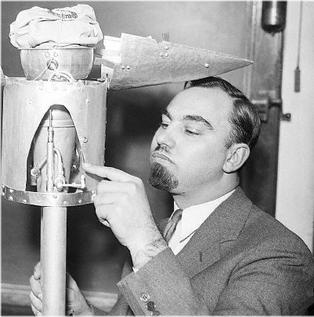 W
WGeorge Edward Pendray was an American public relations counselor, author, foundation executive, and an early advocate of rockets and spaceflight. He was associated with Robert H. Goddard and helped organize the National Aeronautics and Space Administration (NASA). He conceived the idea of a "time capsule" sealed container to preserve current everyday items for future historians and implemented his concept at the 1939 New York World's Fair. Pendray co-founded the American Interplanetary Society.
 W
WHerman Potočnik was a Yugoslav Slovene rocket engineer and pioneer of astronautics. He is chiefly remembered for his work addressing the long-term human habitation of space.
 W
WQian Xuesen, or Hsue-Shen Tsien, was a Chinese mathematician, cyberneticist, aerospace engineer, and physicist who made significant contributions to the field of aerodynamics and established engineering cybernetics. Recruited from MIT, he joined Theodore von Kármán's group at Caltech. During WWII, he was involved in the Manhattan Project, which ultimately led to the successful development of the first atomic bomb in America. Later on, he would eventually return to China, where he would make important contributions to China's missile and space program.
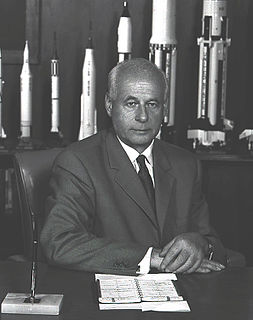 W
WEberhard Friedrich Michael Rees was a German-American rocketry pioneer and the second director of NASA's Marshall Space Flight Center.
 W
WTecwyn Roberts was a Welsh spaceflight engineer who in the 1960s played important roles in designing the Mission Control Center at NASA's Johnson Space Center in Houston, Texas and creating NASA's worldwide tracking and communications network.
 W
WLudwig Roth was the Aerospace engineer who was the head of the Peenemünde Future Projects Office which designed the Wasserfall and created advanced rockets designs such as the A9/A10 ICBM.
 W
WArthur Louis Hugo Rudolph was a German rocket engineer who was a leader of the effort to develop the V-2 rocket for Nazi Germany. After World War II, the United States Government's Office of Strategic Services (OSS) brought him to the U.S. as part of the clandestine Operation Paperclip, where he became one of the main developers of the U.S. space program. He worked within the U.S. Army and NASA, where he managed the development of several systems, including the Pershing missile and the Saturn V Moon rocket. In 1984, the U.S. Government investigated him for war crimes, and he agreed to renounce his United States citizenship and leave the U.S. in return for not being prosecuted.
 W
WValentin Vital'yevich Rumyantsev — Russian specialist in mechanics, stability theory and control. Member of the Russian Academy of Sciences (1992), Department of Engineering, Mechanics and Control.
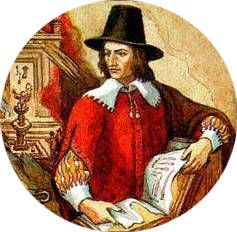 W
WKazimierz Siemienowicz was a general of artillery, gunsmith, military engineer, and one of pioneers of rocketry. Born in the Raseiniai region of the Grand Duchy of Lithuania, he served in the armies of the Polish–Lithuanian Commonwealth and of Frederick Henry, Prince of Orange, a ruler of the Netherlands. No portrait or detailed biography of him has survived and much of his life is a subject of dispute.
 W
WApollo Milton Olin Smith was an important figure in the aerodynamics field at Douglas Aircraft from 1938 to 1975 and an early pioneer in the area of Computational Fluid Dynamics.
 W
WAry Sternfeld was co-creator of the modern aerospace science. He was a Polish engineer of Jewish origin, who studied in Poland and France. From 1935 until his death he worked in Moscow.
 W
WMikhail Klavdievich Tikhonravov was a Soviet aerospace engineer and scientist who was a pioneer of spacecraft design and rocketry.
 W
WKonstantin Eduardovich Tsiolkovsky was a Russian and Soviet rocket scientist and pioneer of the astronautic theory. Along with the French Robert Esnault-Pelterie, the Transylvanian German Hermann Oberth and the American Robert H. Goddard, he is considered to be one of the founding fathers of modern rocketry and astronautics. His works later inspired leading Soviet rocket engineers such as Sergei Korolev and Valentin Glushko and contributed to the success of the Soviet space program. Tsiolkovsky spent most of his life in a log house on the outskirts of Kaluga, about 200 km (120 mi) southwest of Moscow. A recluse by nature, his unusual habits made him seem bizarre to his fellow townsfolk.
 W
WMax Valier was an Austrian rocketry pioneer. He helped found the German Verein für Raumschiffahrt that would bring together many of the minds that would later make spaceflight a reality in the 20th century.
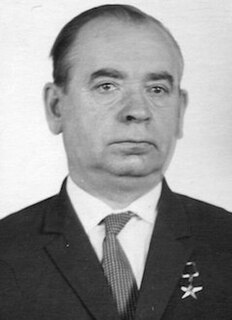 W
WLeonid Alexandrovich Voskresensky was a Soviet rocket engineer and long-time associate of Chief Designer Sergei Korolev. He served as launch director for Sputnik and for the first manned space flight, Vostok 1. The lunar crater Voskresenskiy is named in his honor.
 W
WMikhail Kuzmich Yangel, was a Soviet engineer and the leading missile designer in the Soviet Union.
 W
WGeorg Arthur Constantin Friedrich Zander, was a Baltic German pioneer of rocketry and spaceflight in the Russian Empire and the Soviet Union. He designed the first liquid-fueled rocket to be launched in the Soviet Union, GIRD-X, and made many important theoretical contributions to the road to space.